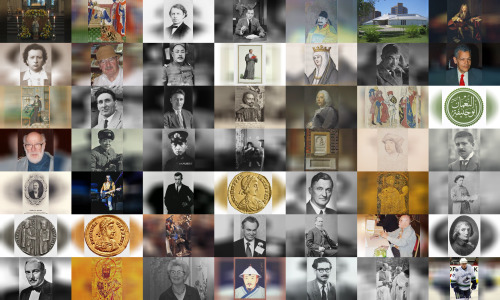#xianbei
Text
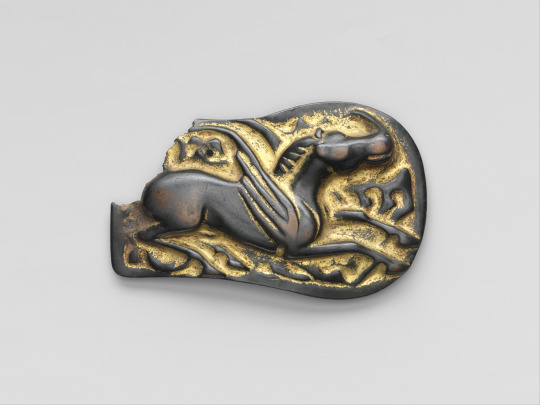

東漢(鮮卑文化) 鎏金翼馬紋銅飾板
~ Plaque with a Winged Horse.
Period: Eastern Han dynasty (25–220), Xianbei culture
Date: 1st century
Culture: North China
Medium: Gilt bronze
#ancient#ancient art#history#museum#archeology#ancient history#archaeology#china#chinese#ancient china#winged horse#horse#plaque with a winged horse#plaque#eastern han dynasty#xianbei#1st century
905 notes
·
View notes
Text

HARVESTING WOOD IN SOUTHERN SIBERIA/TUVA IN THE XIONGNU-XIANBEI PERIOD
One of the great hurdles for large-scale metal production and blacksmithing in the Eurasian steppes was not the mineral deposits, manpower or furnaces, but the fuel. The smelting process requires a great deal of heat for prolonged periods, which requires a lot of charcoal, which requires a lot of wood.
With most of the Eurasian steppes rather tree sparse and comparatively few navigable rivers, this puts a difficult choice in the hands of the nomadic metallurgist seeking to supply a large project; expend great effort in the movement of raw wood (heavy and cumbersome!); carry the charcoal? (unlikely: charcoal when not in modern briquettes is a flaky substance that will disintegrate when carried over distance); or, bring your furnaces and smelters as close to the fuel resources as possible?
This last choice is what was done majority of the time by our friends in the eastern steppes; convenient, as these areas with more trees (South Siberia/Tuva, Transbaikalia, Northern Mongolia, Altai) were also areas with rich deposits of iron ore and other minerals.
This is demonstrated archaeologically, with our largest collections of furnaces being found in association with these areas even before the Xiongnu state. While that is not to say that transport of the raw materials into the steppe did not happen, for nomadic people it makes more sense to bring yourself to where the resources are (spending part of the year there, at least) rather than go to the effort to bring them out into the grassland.
In this scene you can see them doing just that; harvesting wood and in the background, preparing charcoals in pits covered in earth. Once the process is done, they will be ferried to a nearby production site for utilization.
My latest video series discusses this matter of production, furnaces and other details around nomad blacksmithing:
Part 1: Overview
youtube
Part 2: from the Xiongnu to the Türks and Uyghurs
youtube
14 notes
·
View notes
Text
The Han Dynasty (202 BCE - 220 CE) was the second dynasty of Imperial China (the era of centralized, dynastic government, 221 BCE - 1912 CE) which established the paradigm for all succeeding dynasties up through 1912 CE. It succeeded the Qin Dynasty (221-206 BCE) and was followed by the Period of the Three Kingdoms (220-280 CE).
It was founded by the commoner Liu Bang (l. c. 256-195 BCE; throne name: Gaozu r. 202-195 BCE) who worked toward repairing the damage caused by the repressive regime of the Qin through more benevolent laws and care for the people. The dynasty is divided into two periods:
Western Han (also Former Han): 202 BCE - 9 CE
Eastern Han (also Later Han): 25-220 CE
The separation is caused by the rise of the regent Wang Mang (l. 45 BCE - 23 CE) who declared the Han Dynasty finished and established the Xin Dynasty (9-23 CE). Wang's idealistic form of government failed and, after a brief period of turmoil, the Han Dynasty resumed.
Gaozu initially retained the Qin Dynasty's philosophy of Legalism but with less severity. Legalism gave way to Confucianism under the most famous monarch of the Han, Emperor Wu (also given as Wudi, Wuti, Wu the Great, r. 141-87 BCE) who, among his many other impressive achievements, also opened the Silk Road, establishing trade with the West. The Han also negotiated a peace, which was more or less observed, with the nomadic peoples of the Xiongnu and Xianbi to the north and the Xirong to the west which stabilized the borders and encouraged peace and cultural development in the arts and sciences. Many of the commonplace items taken for granted today were invented by the Han such as the wheelbarrow, the compass, the adjustable wrench, seismograph, and paper, to name only a few.
The Han also restored the cultural values of the Zhou Dynasty, which had been discarded by the Qin, encouraged literacy, and the study of history. The historian Sima Qian (l. 145/35-86 BCE) lived during this period whose Records of the Grand Historian set the standard and form for Chinese historical writings up through the 20th century CE. Chinese mythology and religion also developed during this time including the popular messianic movement focused on the Queen Mother of the West.
By c. 130 CE, however, the imperial court had become corrupt with eunuchs exercising more actual power than the Chinese emperor. By the time of the emperor Lingdi (r. 168-189 CE), the Han royal house had less actual authority than the palace eunuchs and the generals (who were more or less autonomous warlords) stationed at the borders of the country. In 184 CE, the Yellow Turban Rebellion broke out in response to high taxes and famine and these generals put it down.
Among them was Cao Cao (l. 155-220 CE) who, afterwards, waged war against his fellow commanders for control of the state. He was defeated at the Battle of Red Cliffs in 208 CE after which the country was divided between three kingdoms and the Han Dynasty fell. Its legacy is so profound that it continues to the present day and the majority of ethnic Chinese refer to themselves as Han People (Han rem) proudly in identifying themselves as descendants of the great ancient dynasty.
#studyblr#history#military history#politics#chinese politics#philosophy#technology#invention#qin dynasty#han dynasty#western han#eastern han#xin dynasty#three kingdoms#battle of red cliffs#yellow turban rebellion#china#xiongnu#xianbei#xirong#emperor gaozu of han#wang mang#emperor wu of han#sima qian#emperor ling of han#cao cao#legalism#confucianism#silk road
0 notes
Photo
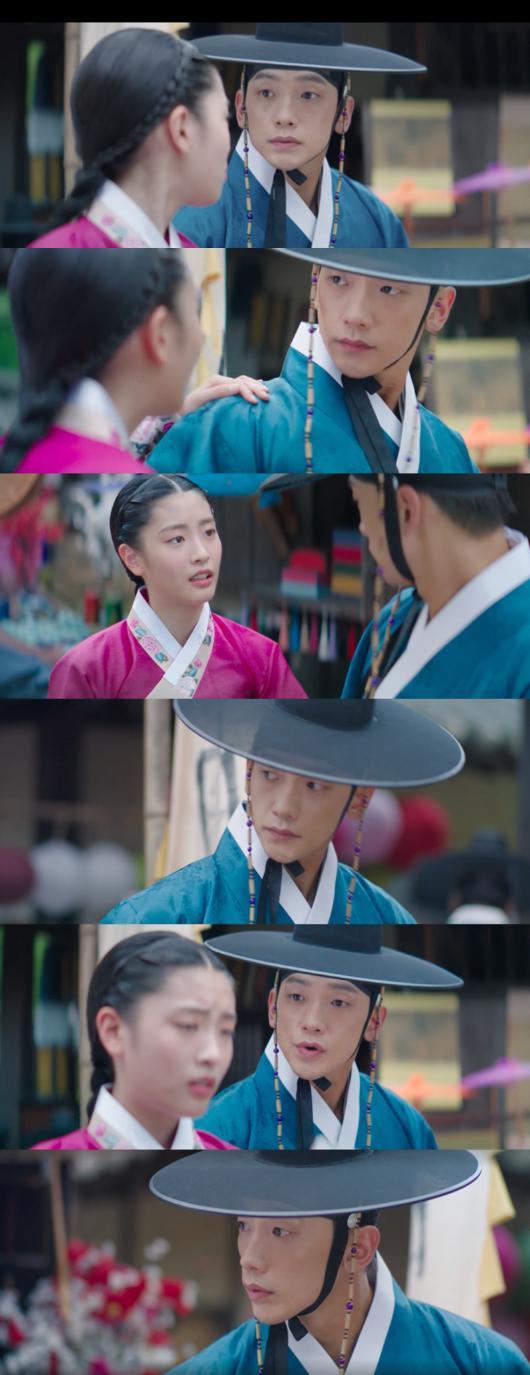
Why is Rain in 'Schrup'?
Source: k-star-holic.blogspot.com
0 notes
Text
Таскин В. С. Материалы по истории древних кочевых народов группы дунху (1984)

Таскин В. С. Материалы по истории древних кочевых народов группы дунху (1984) https://www.avetruthbooks.com/2022/09/taskin-v-s-materialy-po-istorii-drevnikh-kochevykh-narodov-gruppy-dunkhu-1984.html?feed_id=3340
#History#BookofJinJìnShū#BookoftheLaterHanHòuHànshū#BookofWeiWeiShu#Donghu#HistoryofMongolicpeoples#HistoryofTurkicPeoples#KhitanQìdān#KumoXiKùmòXīTatabï#RecordsoftheGrandHistorianShǐjì#RecordsoftheThreeKingdomsSānguózhì#Rouran#ShiweiShìwéi#TufaTūfà#TuyuhunTǔyùhúnHénán‘Azha#Wuhuan#Xianbei
0 notes
Note
I LOVE your Mongolia hcs. Looking back at some Mongolia art, I was always confused why Mongolia is always drawn much older than Russia. Isn’t Russia supposed to be older as a country??? Mongolia appeared in the 13th century and Russia in 10th?
Ok so I personally headcanon Mongolia to be an old as f*** man LMAO. Not as old as as China or India or Persia but but old that other nations look at him and put him in the same kind of category.
It's not as if Mongolian people sprang up out of nowhere when Genghis Khan came along. Mongolian people and their predecessors have been there for a while. Albeit they were fragmented before Genghis came along and united the Mongol tribes.
I think that Mongolia existing before this, even way before this makes sense (in my personal headcanon). I will touch upon the predestination hetalia theory later on in this God-forsaken essay. For now, this is a more simple example. Aph Prussia is still a character/"alive" despite Prussia as a state/nation no longer existing. So, in hetalia, a nation rep can exist without the nation/state itself actually existing. Perhaps more of a representation of that ethnic group?
Coming back to what I said about how its not like Mongolian people sprung up out of nowhere in the 13th century. I also think the same could be said for Mongolia himself. Many different nomadic groups lived in/ruled over Mongolia since Ancient times, and I like to think Mongolia lived through a lot of this (but he cannot remember a lot of his very early life, will get onto why later).
According to the introduction of the secret history of the Mongols, the Mongols were a small nomadic tribe that lived in Mongolia along with the Unggirads, Kereyids, Naimans, Tayichiuds and the Merkids. The Mongols were among one of the many nomadic groups traveling around this area in the 10th century. Indeed, I do recall reading that there were Chinese records calling the Mongols by their name from the 9/10th century?
So, in this instance, you could argue that Russia and Mongolia are around the same age. I’ve seen some people accept this as their personal headcanon, and it makes quite an interesting dynamic!
However, I personally like to go back even further.
Now I understand that the argument of X didn't spring up out of nowhere it's always existed can only hold up for so long. So I do hope my argument justifying why Mongolia is an old man doesn't come across this way.
Way before Mongols, there was the Xiongnu. I’ll give a simplified run down of what happened with them. The Xiongnu empire emerged in 209 BC however fell apart in the 4th century AD.
As I have stated before, many different ethnic groups ruled over and lived in Mongolia since Ancient times. However the establishment of the Xiongnu empire is what marked the beginning of statehood on Mongolian territory.
Side note: I am aware that the ethnicity of the Xiongnu has been widely contested and hypothesised among scholars and historians. There are quite a few scholars who insist on the Xiongnu being of Mongolic origin. For hetalias sake, I’ll accept them as Mongolic. Remember, I am not a historian, this is for hetalia purposes.
By 48 AD, the Xiongnu were weakened and were divided into Northern and Southern parts. The Northern Xiongnu migrating to the West and creating what was known as the Hunnic empire.
The Xiongnu, now weakened, meant that the Xianbei could come back to bite them in their asses. The Xianbei were the Northern branch of the Donghu, a people who were conquered/subjugated by the Xiongnu, one of the first in fact. The Donghu were a proto-Mongolic group that Chinese historians recorded as existing as early as the 4th century BC.
From then on, different factions/branches of the Xianbei would go on to consolidate their power in Mongolia as well as Central/Northern Asia. For example, the Tuoba established the Tuoba Wei empire and ruled over Northern China from 386 AD-535 AD. Another branch off of the Xianbei, the Rourans, established a nomadic empire in this area too.
I’ve already talked about how scholars/historians have contested the ethnic background of the Xiongnu. It is the same with the Xianbei, but less so. Many historians agree on the fact that they were Mongolic/spoke a Mongolic language with Turkic influences. For hetalias sake and for simplicitys sake, I will accept them as Mongolic.
I like to think that both the Xiongnu and the Xianbei were Mongolic (not without Turkic influence) and were major predecessors to the Mongolia we all know and love today. However let me just say, that nation family trees are very complicated, and nations are not born in the traditional sense of two parents, so me saying that these two were major predecessors isn’t me trying to pin them as like. His dad’s or something. A new nation or representative of a nation can be “born” for a plethora of reasons.
I would like to get onto the subject of pre-destination in hetalia as I feel like it is relevant to this part of my essay where I will slowly begin to justify why I believe Mongolia is old.
If a (potential) successor/successors emerge from a nation, or combination of nations, does this mean that the previous nations fate is already set in stone? That their demise was destined to happen?
It’s not a secret that a successor can exist at the same time as their predecessor, even long before the predecessor is weakening. For example, Hima released official art of Ancient Egypt holding a much younger “modern” Egypt. In addition, there’s lots of fanart of mama Britannia with little England, so successors co-existing with their predecessors seems to be something that it widely accepted in the hetalia fandom.
My own view on the predestination hetalia theory is mixed but largely positive. I believe that not all new potential successors who emerge will be the true successor in the end. They could just be smaller, failed states who won’t last very long. And considering the history of the world I’m sure there were a lot of these.
But. When it comes to the true successors, the ones who come out on top, and who emerge the most stable/prevalent/powerful? I personally believe that they can crop up long before they get to that powerful state, and again, can co-exist with their predecessors, even if the predecessors are not weakened yet. And considering how powerful the Mongol Empire was, how it overshadows all previous steppe Empires, and the fact that Mongolia is still around today? You can guess where this is going.
Some scholars speculate that the intermarriage between Xiongnu and Xianbei may have been the genesis of modern (?) Mongolians. Indeed, the Xianbei, after kicking the Xiongnu’s asses, encouraged intermarriage between themselves and the Xiongnu, even with the Chinese. However Xianbei nobility was restricted to only Xiongnu in terms of intermarriage.
Furthermore, it is the consensus of most historians that the Mongols of Genghis Khan were descendants of a peripheral Xianbei branch, the Shiwei.
So, the Xianbei/Donghu, or in hetalia terms, aph Xianbei/Donghu, was more of a major predecessor to aph Mongolia than aph Xiongnu was. Once the Xianbei defeated the Xiongnu (wasn’t just the Xianbei, the Chinese had enough of them and conducted an ethnic genocide against them) what was left of them was absorbed into the Xianbei state/identity, thus being a part of Mongolias identity.
Indeed, there are many cultural similarities between the Xiongnu and the Mongols. Such as the composite bow, gers, and the long song. The Long Song and its origin is mentioned in the book of Wei, and is believed to date back at least 2000 years.
Because of everything I’ve just said, I personally headcanon Mongolia as first emerging as, seemingly, one of these small/destined to fail Donghu/Xianbei states, who was pretty much ignored by his predecessors for the most part during this period as they probably looked at him and thought “oh look another rando kid who won’t be around in half a century lol ignore him”. So he was passed around from family to family who didn’t know what to do with him as he just wouldn’t age. However, facial wise, as a child, he did kind of look a bit like the Xiongnu/Xianbei (others too but this was a little more noticeable). Xianbei, being ruled over by the Xiongnu at this time, probably noticed this and felt a bit uneasy around him. So Xianbei ignoring him was a mixture of “random failed wannabe state who won’t be here for long lol” and “omg this kid is foreshadowing total Xiongnu dominance over my people”.
Xiongnu, on the other hand, was probably greatly amused by Mongolias existance as they ruled over the Xianbei at the time, and seeing this kid translated to them as “lol the Xianbei are fucked”.
Soon it became apparent that it was actually the Xiongnu who were fucked when the Xianbei rebelled in 93 AD. This wasn’t the complete end of the Xiongnu but it was the beginning of the end (they did their very best to hold on). Again, I’m not saying that these two were the only predecessors to Mongolia and this certainly isn’t supposed to be a completely accurate historical text, this is me trying to justify a hetalia headcanon LMAO.
As time went on, I think subsequent rulers of the steppe began to realise that “oh wait, why is he [Mongolia] still here oh that’s weird” so at that point they began to view him with more significance despite the fact he was aging slowly, even by nation standards, and so allowed him to stay with the family of nobility rather than random families.
He did get stronger over time but there was still that consistent illness that was about him. A lot happened between his “birth” and the unification of the Mongol tribes under Genghis Khan, but the unification of the Mongol tribes is what made that sickness go away altogether and gave him a major growth spurt (why I headcanon him as tall). He truly felt in control of himself as his identity was truly consolidated at this point.
So yeah he emerged sometime during the late-ish BC period (I’m sorry I know that sounds vague) and was seen as just some random small state and so his identity was definitely not all there yet and yes it obviously developed throughout the years. The growing pains must have sucked lol.
Also random but another reason why I like the Xiongnu/Mongolia cultural influence link is from influence from other hetalia creators. @absolvtely-barbaric on tumblr has influenced me. I liked the fact that Xiongnu gave his “sons” cheek scars to teach them a lesson about endurance, and @pearlescentplums draws him with a cheek scar (and a lip scar) and the way they draw him is Canon in my head sorry <33 I’m not sure how I headcanon how Mongolia got his scars yet but. I like it being there as a nod to previous rulers of the steppe, so now I’m headcanoning that aph Xianbei (?) also had a lip scar LMAO.

Aph Mongolia by @pearlescentplums and yes he looks like this to me in my head
I highly doubt Mongolia can remember much of his very early life which probably frustrates him to no end. The fact that it was so long ago and the fact that he did not have a strong identity/sense of identity also didn’t help with memory retention. He remembers some voices and distinct silhouettes but other than that, not a lot.
So, this is why I hc him as being old. I’m not a historian and I did write a lot of this at like 4 am hahah, I’ve had to take a lot of liberties too as the history of steppe people is quite obscure plus I am not an expert on this subject so I tried my best. This is just my personal headcanon and it’s completely fine if you disagree with it!! I'm sorry in advance if I've gotten some dates wrong or if this is hard to follow <3
#hetalia#aph mongolia#hws mongolia#Hetalia mongolia#hetalia world twinkle#hetalia world stars#hetalia world series#Aph Russia#Hetalia russia#Hws russia#Aph china#Hws china#Hetalia china#Aph Xiongnu#Hws Xiongnu#Hetalia Xiongnu#Aph xianbei#Hws xianbei#Hetalia xianbei#Aph Egypt#Hws egypt#Hetalia Egypt#Aph prussia#Hws prussia#Hetalia prussia#hidekaz himaruya#Himaruya#Aph asia#Aph east asia#Hetalia asia
31 notes
·
View notes
Text
“oh it’ll be fun to have a story set in that particular time period in that particular place” turns out that was the devil speaking uh
#jau rants#I am desperately trying to grab every crumb of information I can find in english on the Xianbei#and completing it with current Mongolian stuff even though I know it's ridiculous#there's nearly 2000 years between the two and I know it's ridiculous#but here we are anyway
6 notes
·
View notes
Text
GQ similarities. i love it. questioning who they are. with wyb, it’s because he is an android and with XZ, it because he is in a dreamscape. the whole concept reminded me of the whale circus cpn cause the idea looks similar.

and look at these two showing off their backs for their magazine teasers! how rude! yes we know you two have been working out and we can see the results. <3 now i wonder who that wang wang xianbei joke was really for. 👀


93 notes
·
View notes
Text
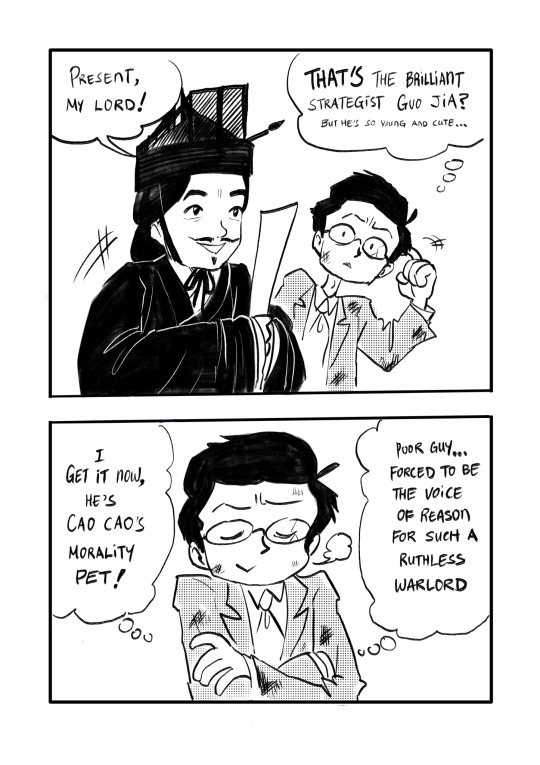
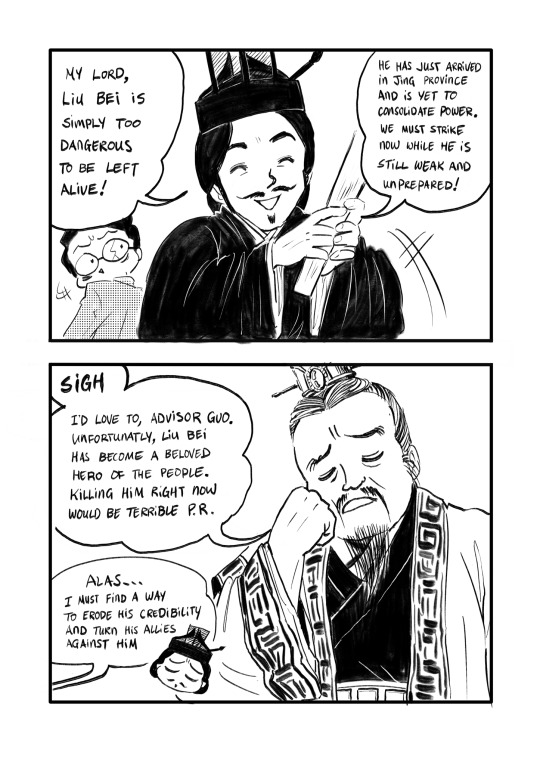
-a Qinghua graduate in the court of the warlord Cao Cao-
part 1
Me designing Guo Jia: what if Zhuge Liang brushed his hair and was like, 2% more evil.
this popped into my head while i was reading wikipedia. Guo Jia would have been around 27-30 when he joined Cao Cao's administration and he was very much a "have you considered Violence, my liege," type of advisor. He accurately predicted Cao Cao's seemingly impossible victory against Yuan Shao, told him to go north and attack the Xianbei people, and depending on which account you read, urged Cao Cao to kill Liu Bei before he stopped being a loser and started consolidating power. (Spoiler: the Sandalweaver has plot armour).
#i survived my thesis proposal. heres a little treat :)#a qinghua graduate in the court of the warlord cao cao#romance of the three kingdoms#chinese history#are you even an ancient chinese warlord if you don't have an overzealous young strategist that constantly needs enrichment*#*plotting the downfall of your enemies
52 notes
·
View notes
Text
Rare Portraits Depicting Hanfu Worn with Right Over Left Lapel Closing (左衽).

Thirteenth Ancestor Portrait from Portrait Album of Wu’s Ancestors 吳氏先祖容像十三. Ni Renji. Painted sometime between the late Ming Dynasty and early Qing Dynasty during the artist’s life (1607-1685). Yiwu Museum, Zhejiang, China [image source].
For the Han, the left lapel was considered Yang and the right one Yin and, thus, living people placed the left lapel over the right one to symbolize Yang (life) covering Yin (death). That’s why only dead people had their right lapel over their left. In the case of the dead, Yin (death; right lapel) overtook Yang (life; left lapel). Moreover, the left over right lapel (右衽) served as an ethnic distinction for the Han.
However, not all living Han people followed this tradition and there are documented cases of them wearing their hanfu with the right lapel over the left one.
There are exceptions in which living Han Chinese would wear clothing with a zuoren closure. For example, in some areas (such as Northern Hebei) in the 10th century, some ethnic Han Chinese could be found wearing left-lapel clothing. It was also common for the Han Chinese women to adopt left lapel under the reign of foreign nationalities, such as in the such as in the Yuan dynasty. The practice of wearing the zuoren also continued in some areas of the Ming dynasty despite being a Han Chinese-ruled dynasty which is an atypical feature.
Wikipedia, Garment collars in Hanfu
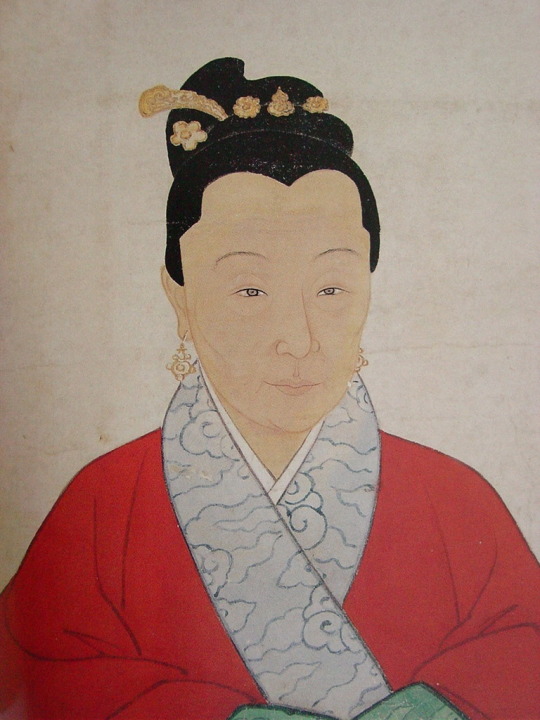
Fifth Ancestor Portrait from Portrait Album of Wu’s Ancestors 吳氏先祖容像五. Ni Renji. Painted sometime between the late Ming Dynasty and early Qing Dynasty during the artist’s life (1607-1685). Yiwu Museum, Zhejiang, China [image source].
Other non-Han ethnicities, such as the Khitans and Xianbei, would preserve their 左衽 tradition even after adopting hanfu. It’s possible for these women (and its mostly women wearing hanfu depicted with 左衽) to be non-Han in origin or are Han but came from areas where 左衽 was still practiced due to non-Han ethnic influence. I remember reading somewhere that, South of the Yangtze, certain Han women wore their hanfu in both styles.
Since almost all of the portraits below are ancestor portraits and there are plenty of those where the women and men wear 右衽 despite being dead at the time of painting, it’s unlikely that the 左衽 depicted is meant to indicate that the woman is dead.
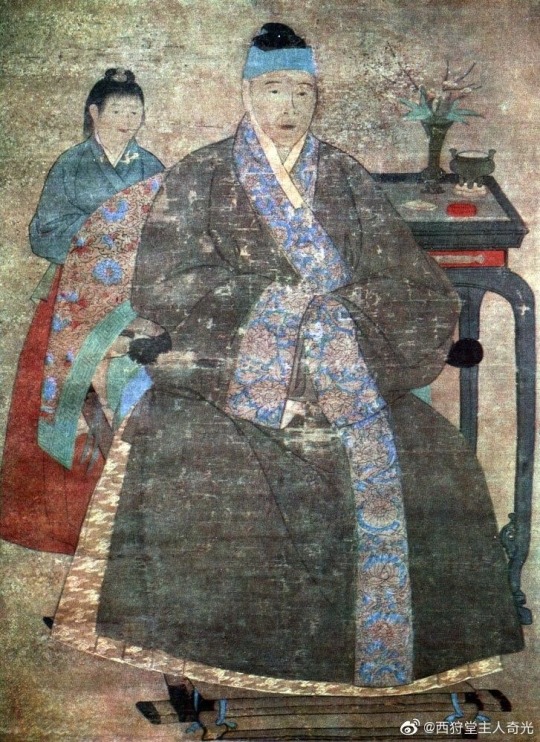
Portrait of the wife of a dignitary with maid by Chow Ying. Scroll. Painting on silk. 16th century. Moscow State Museum of Oriental Art [image source].

Portrait of Father Zhang Jimin and Mother Zhao. Unknown artist. Ming or Qing dynasty, Late Ming or early Qing dynasty (17th century or later). Hanging scroll. Ink and colors on silk. Arthur M. Sackler Gallery. National Museum of Asian Art, Smithsonian Institution [image source].

Ancestor Portrait of a Court Lady. Possibly Ming Dynasty. Unknown artist. Hanging scroll (laid down on panel), ink and color on silk. The Nelson-Atkins Museum of Art [image source].
Notice how, even the maid in the background above, has 左衽.

Possible Portrait of Ancestor with maid. Unknown Artist. Possibly Ming Dynasty [image source].
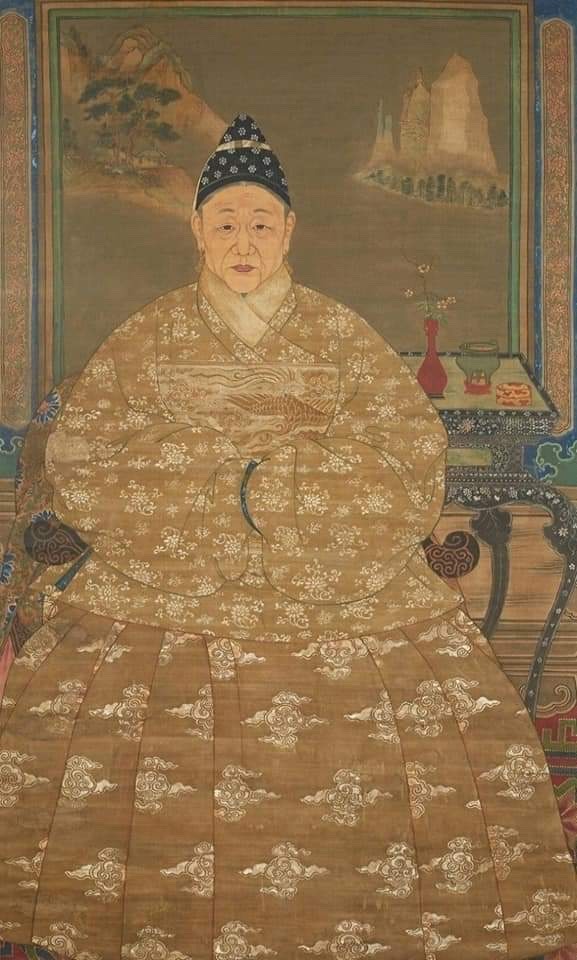
Ancestor Portrait. Unknown artist. Late 19th century. Qing Dynasty. Auguttes Auction House. [image source].
Note: Be careful when dating ancestor portraits. Many were painted posthumously and could depict ancestors from multiple previous generations. Just because the figures are seen wearing a dynasty’s distinctive clothing, does not necessarily mean that it was painted then. Some Qing Dynasty ancestor portraits depict ancestors from the Ming Dynasty and, thus, artists painted the figures with Ming clothing.
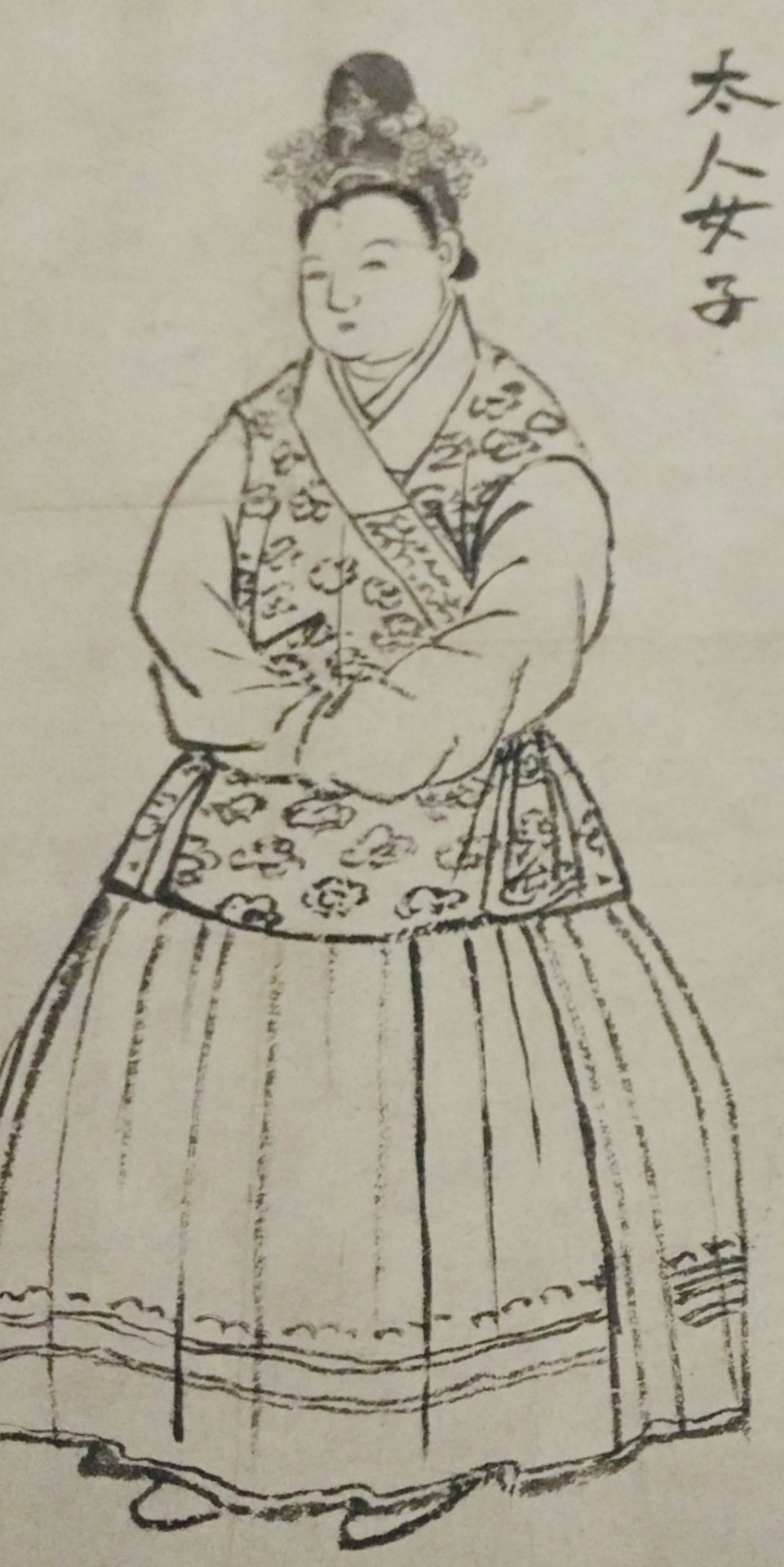

Images portraying hanfu in the Ming Dynasty with 左衽 drawn by Sesshu Toyo (1420 - 1506 CE), a Japanese monk who visited China between 1467 to 1469. Ink on paper [image source].
More portraits with 左衽 and modern recreation:
#chinese history#chinese culture#ming dynasty#ancestor portraits#右左衽#hanfu#ming paintings#ming portraits
128 notes
·
View notes
Note
Do you think you've about exhausted things to talk about with respect to the 3 Kingdoms era?
Not at all.
This got very out of hand but I'm going to leave it as is.
Oh, sure, some subjects have been beaten to death. There's only so much you can say about the particular events that have been told and retold in folktales, opera, novels, and (in the modern age) movies, TV shows, and video games for the last 1800 years. There isn't a lot left to say about the most famous battles and individuals that hasn't been said already.
There's also a lot that is still relatively overlooked, outside of very specific circles. People who didn't get prominent roles in fictionalizations of the period are still pretty obscure. Events that aren't depicted in stories and adaptations don't get much discussion. That's the sort of thing I try to write about, like with my articles on the Crown Prince Affair (Part I | Part II) or my series on Yuan Shao and Gongsun Zan.
But the things I write about are just one very limited facet of the period's history. There's so much more to be said. The stuff I write about is probably the least meaningful. Ultimately it doesn't make much difference who won what battle or what faction took over a government. Individuals varied but all the governments of the time were fundamentally the same. No matter who took power in what region, it was going to be a Han style government, dominated by Han culture. Nothing meaningful was going to change, no matter which of our well-known warlords won. Their battles were largely irrelevant. There's a reason nothing meaningful changed in Shu when it was conquered by Wei, or Wu when conquered by Jin. There's a reason the Sima regime was only superficially different from that of the Cao, and why it really doesn't matter if, say, the Quan family had seized the throne of Wu. Despite individual differences they were all fundamentally the same.
To see what I mean, we don't have to look very far into the future. The collapse of western Jin meant the rise of non-Han polities in significant areas of the former Han/Jin empire. The governments of the Xiongnu, the Xianbei, and and other groups from outside of the Han culture were meaningfully different. Prolonged chaos in the northern portions of the empire resulted in mass movement to the south, into areas previously claimed by the Han people only in name but not in fact. The efforts of Wu and Shu (largely due to He Qi and Ma Zhong) to establish firm control over these regions laid the groundwork for the "sinicization" of southern China, but it was really only with the collapse of Western Jin that the new status quo was established. At the same time, we can also observe the so-called "barbarians" adopting many elements of Han culture to help them rule their new empires.
You could spend your whole career studying something like that.
You could analyze the literature of the period and compare different style and composition across different years and regions. You could dig deep into the economics and study things like government monopolies on key industries, and contrast the different approaches taken by the various rulers of the era. You could study all the material left by civilians who had no part in the "great affairs" of the time. You could study how infrastructure projects meant to support warfare (like the many canals Wei dug) impacted trade and travel for others. You could study the visual arts; paintings, sculptures, miniatures, etc. And all of that gets much more complicated and interesting when you reach beyond the Han culture, into the areas and eras where non-Han influences achieved supremacy and influenced the existing culture.
The era produced some of China's most influential figures whose contributions are far more meaningful than the battles fought by its various generals. Zhong Yao's calligraphy was so influential that we still imitate his writing today. Pei Xiu was one of the most important cartographers in China's extensive history. Hua Tuo's scientific approach to medicine was revolutionary in its time. Du Kui and Xun Xu made extraordinary contributions to music. There are so many others to speak of.
Sociology. Visual arts. Performing arts. Economics. Mathematics. Literature. Technology. The list goes on and on and on. There is absolutely no shortage of new things to study and talk about. A very accessible example is the deep dive @discourseofthethreekingdoms did on the theology of the Yellow Turbans. I don't think I've ever heard that much said about them anywhere. It was a significant and meaningful look at the actual beliefs and ideology of a group usually just dismissed as rebellious malcontents deceived by charismatic opportunists.
Now, none of that is what I generally write about. A big part of that is because that's serious academic work. It's hard, it's complicated, and it requires both resources and training I don't have to get it right. I'm not any kind of real academic. There are people doing this work, and because it doesn't have mass appeal they don't get the kind of credit they deserve, but that's the kind of work that actually matters. People like to read about wars and battles and politics and don't give the same attention to these much more serious and meaningful subjects. It's a damn shame, really, and I can only hope that the ones doing the important work at least receive the respect of their peers.
And if I'm being fully honest, even if I did have the training and resources it takes to do the important work, that's not where my passion is.
I'm a storyteller.
I'm fascinated by these people and their lives. When I get invested in a particular historical era, it's because I find it to be filled with a wide variety of very interesting individuals whose stories I love, and whose stories I want to try to share with others. I like to tell the stories I think don't get told enough; or that get so obscured by fictionalization that the real people involved become unrecognizable. That does end up with me writing about a lot of battles and politicking, because that's where we get a lot of these stories from. When I believe a story is left untold (like with the Crown Prince Affair) I want to tell it. When I believe that a story is being misrepresented, I want to try and correct it. The reason I get so passionate about "history vs. fiction" is because these people were real. Their accomplishments and failures were real. Their triumphs and tragedies were real. Every single name you see was a full human being exactly as complex as you are; and so is every single anonymous soldier and civilian killed in their pointless wars.
Some of these stories have been told and retold so many times that there's nothing interesting left to say. But there are so many others that remain in relative obscurity, and ones where the truth has become obscured over time. That's mostly what I spend my time writing about now.
22 notes
·
View notes
Text
Iron Widow
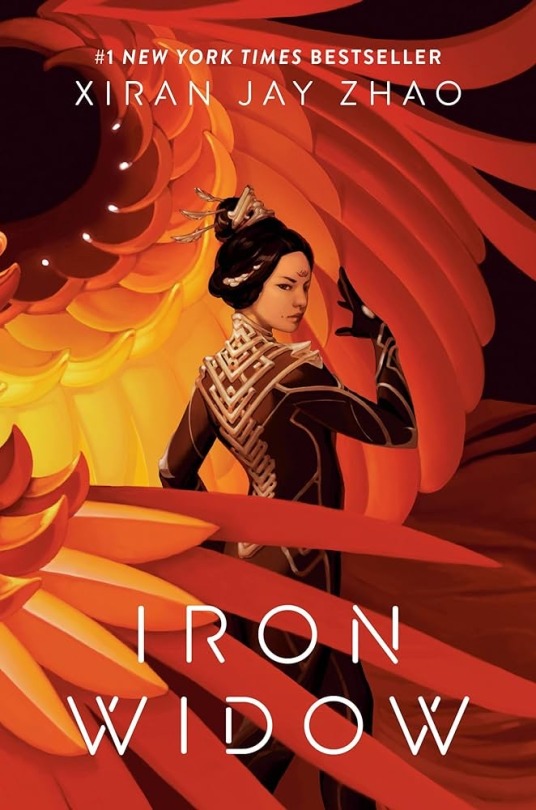

Spoiler alert
I picked up this book praying to god that it would be good because I spend half my life lurking around Xiran Jay Zhao’s TikTok and I didn’t want to let her down by leaving a bad review. I didn’t have to worry. Iron Widow was fucking fantabulous. It was so angry and rightfully so because that world is horrible. The most horrible thing about Huaxia is that different aspects of it are a reality for different women all over the globe. Women and even young girls are still being essentially sold as brides in some parts of the world. In other parts of the world girls are being denied an education. Even in the USA, where I live, which is supposed to be more progressive about women’s rights, women have lost the right to decide what to do with their own bodies in some states and there’s even a movement to take away women’s rights to vote. I still think that, at least from my (admittedly privileged) perspective things can still be solved nonviolently and we’re not quite at the “brutally taking over the country” level yet.
I think the most striking bit of Iron Widow for me was when Zetian realized that the folks from central command and all the soldiers were more scared of her, a woman who had only done what men had been doing for years, than a literal family annihilator. In the USA, all this push back against women’s rights to abortion and rights to vote came after a big feminist movement (#Metoo). All the men in power try to keep women downtrodden because they’re scared of women with power. Just something to think about.
Aside from the obvious feminist aspect of the book, one of the first things that I noticed about Iron Widow was the disability representation. The main character, Wu Zetian, has to use a cane to walk. I feel like physical disability representation, particularly ones that get in the way of every day mobility, are not present in YA literature much unless the book is specifically about the main character overcoming their disability. I was really happy for this type of representation. Finally a disabled character that wasn’t defined by their disability.
Another aspect of Iron Widow that I loved was the historical aspect. For one, all the place names mentioned (Sui-Tang border, Zhou province, and Ming province) were named after historical dynasties of China. I should know, my AP World History teacher made my whole class memorize the dynasties song. It’s been 5 years and it still haunts me in my sleep. Also, Wu Zetian was very clearly based off of the Empress Wu Zetian of the Tang dynasty. The Qin Zheng emperor dude was clearly based off of Shi Huangdi, China’s “first emperor.” Even his tomb in the volcano was like Shi Huangi’s tomb with the terracotta warriors. Rongdi was a word used to refer to certain tribes of people not of Han Chinese descent and the Xianbei tribe was a very important one. I’m sure there are more historical Easter eggs, I just didn’t notice them.
Iron Widow is the first YA book I’ve read that features a polyamorous relationship and I personally love it. I think the dynamics between Yizhi, Shimin, and Zetian are perfect. An added bonus is that I didn’t have to read about some dumb fighting over the girl part or “oh no, who should I choose?” That gets boring fast. Part of me kind of wished that Zetian would have a female love interest so we could read about a lesbian couple overthrowing the patriarchy but alas, we can’t get everything.
I do think that the ending was a bit too easy, though. It feels like it should be harder to take over the country than flying in on a robo-dragon thing, destroying some stuff, and declaring yourself the Iron Empress. I don’t know how I would have written it, though, cause I guess it might be pretty jarring to see this super powerful robo-dragon with super powerful pilots, one of whom hasn’t been seen in over two centuries. It probably would have been pretty hard (and stupid) to try and fight back, still, I’d like to have seen someone try (and more than just by holding hostages).
Characters
Wu Zetian: Zetian did things that I’ve been waiting for YA book characters to do for ages. Her just daring the soldiers to shoot her when they were trying to figure out what to do with her after surviving Li Shimin. Taking advantage of her untouchable position in different situations. That was some bad bitch behavior. I approve. I also like how you can see her character evolving as she realizes the complexities of her world. Like, somehow she becomes more empathetic and more ruthless at the same time. I think it’s because the more she learns about her world and the people around her, the more attachment she develops for some characters (like Shimin) and the more hate she develops for other characters (An Lushan). You also see her will to live increase as she goes from thinking of herself as just another cog in the machine to realizing that she can make a big change.
Li Shimin: I’m probably going to have hordes of angry fans coming at me for this comment, but Shimin was kind of disappointing to me. I think it’s because I was expecting dark humor and wry comments but instead I just got dark and serious. I mean, it makes sense when you consider his backstory, but still I wish we could’ve gotten some humor out of him. Some indication that he feels things other than anger, guilt, or sadness. Of course, that doesn’t mean I didn’t get invested in his fate. No, I’m still desperate to find out if Zetian manages to get him back. I’ll have to wait until December to find out though.
Gao Yizhi: It should come as no surprise to anyone who’s read my past book reviews that Yizhi is my favorite character. I mean, he basically reads as a blueprint for “Pink’s Fictional Crushes,” the rich pretty boy sweetheart with a hidden ruthless side and most importantly that long k-drama/c-drama hair. I’ve gotta say, I was not expecting him to be the comic relief, but he kind of was. I mean, some of his lines were just golden “you can’t shoot me; I’m rich!!” The only thing that kind of disappoints me about Yizhi is that he doesn’t seem like a strong character. I mean, he clearly is because it definitely takes a strong character to pew pew laser beam their dad, but for most of the story, he was kind of just Zetian’s fanboy. I’m really hoping in the next book we see more of his personality separate from Zetian.
4 notes
·
View notes
Text
".. Shen Qiao asked [the maids] to take him outside on a couple excursions. On these, he discovered that Yecheng was indeed as Yu Shengyan had described. White jade lined the streets, the roofs were trimmed with tiles of carved glaze.... their buildings and architecture, their clothes and customs, all retained some Xianbei influences. Compared to the refined elegance of the south, here there was a sense of unrestrained vigor... Wide robes and loose sleeves, fluttering lapels and dancing sashes, exquisite horses and extravagant carriages..."
Awfully pretty description
Provided to us
by the man
who cannot see.
5 notes
·
View notes
Text
>Xiongnu dominates and subjugates the Donghu
>Descendants of the Donghu, the Xianbei, come back years later to dominate the Xiongnu in return
>The Xianbei become sinicized
>The Mongols dominate and subjugate the Jurchens
>Descendants of the Jurchen, the Manchurians, come back years later to dominate the Mongols in return
>The Manchurians become sinicized
Northernbros... Is it over?
#This is a bit of an oversimplification#But the parallels were funny to me#hetalia#aph mongolia#hws mongolia#hws china#aph china#hetalia world stars#hetalia world series#hetalia world twinkle#Hetalia mongolia#Hetalia China#Wang Yao#Yao wang#Aph manchuria#Hws manchuria#Aph Xianbei#Hws Xianbei#Aph Xiongnu#Hws Xiongnu#Aph Donghu#Hws donghu#Hetalia manchuria#Historical Hetalia#Hetalia memes#Hetalia shitpost#Aph east Asia#Hetalia East Asia#Hws east asia#Hetalia Asia
16 notes
·
View notes

